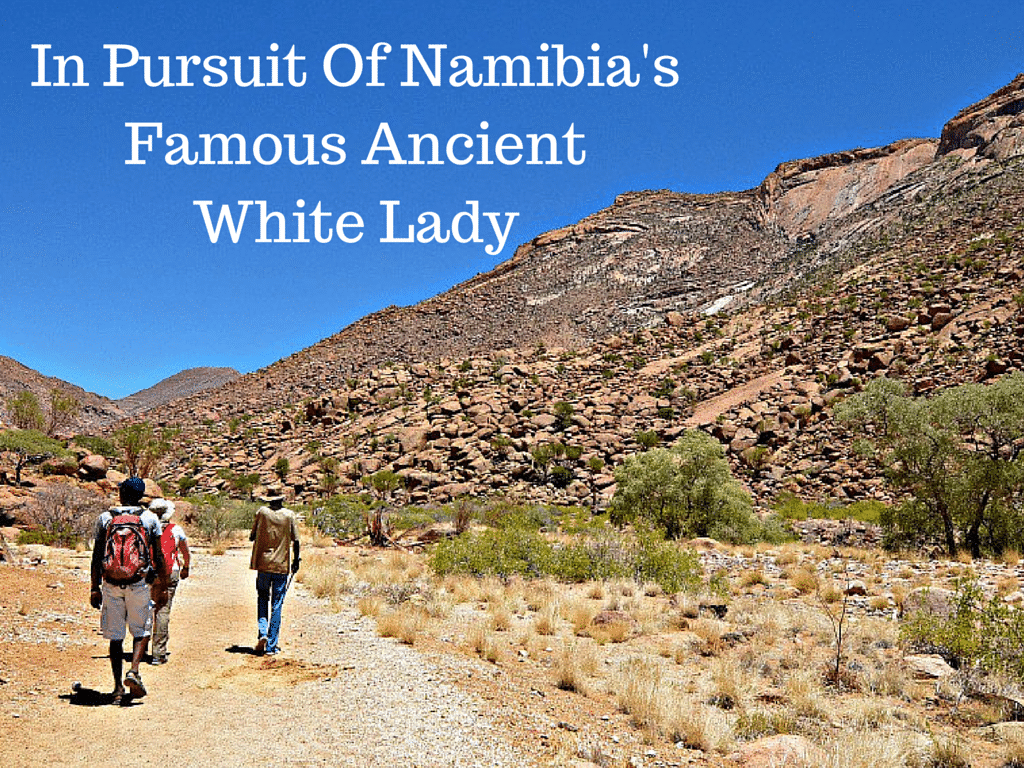
104 degrees Fahrenheit.
Am I crazy to be out hiking in the Namibia Desert at noon without a cloud in the sky, and barely a tree for shade?
The fact I even had to ask that question should provide the answer. But here I am in Namibia, desperately chugging water as I trek — or maybe stumble — behind my local guide, Justice. Back in New York, this would be the type of day meant for boarding myself up in my Brooklyn apartment and blasting the air conditioning so high I fund Con Edison for a year. I don’t have that choice here, though; not only because my hotel for the night doesn’t have air conditioning, but because I only have nine days to explore this beautiful country and its most epic treasures.

An Ancient Quest
My quest on this day is not without a purpose. To be more specific, I’m hiking around Brandberg Mountain – Namibia’s highest mountain at 2,606 meters (8,550 feet). It’s also known as “Fire Mountain” or “Burning Mountain” – as the Damara people (Namibia’s oldest inhabitants after the bushmen and the Nama) named it – due to the granite’s bright red glow when the sun hits its western face. I’m not here to summit though — you need two days for that, one up and one down. Instead, I’m here to view Namibia’s famous painted “White Lady.”
Around Brandberg Mountain there are over 50,000 rock paintings, with more being discovered each year. One could say it’s Namibia’s largest open air art gallery. There is debate over whether the paintings were done by bushmen or Damara ancestors, though there is a clear categorization between the works as “monochrome paintings” are over 5,000 years old and “polychrome” are less.

I love a hike that goes beyond simply scenery, and this two-hour round-trip route tells a vivid story; one that not only tells of Namibia’s rich history, but also the world’s. Rock art is one of those things that truly shows the importance of creating and storytelling in the human narrative as ancient cultures all over the world practiced it without knowing others were doing it too. It’s embedded within our deepest desires to communicate and form relationships with those around us. The mediums may have altered slightly — these paintings are essentially the first newspapers and books — but that same drive has always been in all of us.
And I’m going to witness this evidence up close.
Adaptable Landscapes
The good thing is the hike is almost entirely flat, so what will matter most is staying hydrated and having some salty snacks on hand. The other good thing is the outstanding desert scenery — giant rocky slopes curving down toward the floor and spilling out boulders speckled with edible desert fruits, fragrant herbs and hallucinogenic plants used by ancient shamans. It’s amazing anything grows out here, let alone flora that can be consumed. The piles of elephant and antelope dung remind me of the power of adaptation.

I enjoy the scenery thoroughly, snapping away on my camera despite its black casing feeling like hot lava. Finally, we get to a man-made overhang for some rest. Now we are just steps away from the White Lady.
“If there are over 50,000 pieces of rock art in this desert then why is the White Lady in particular so famous?”
Justice smirks. “You’ll see. Let’s go.”
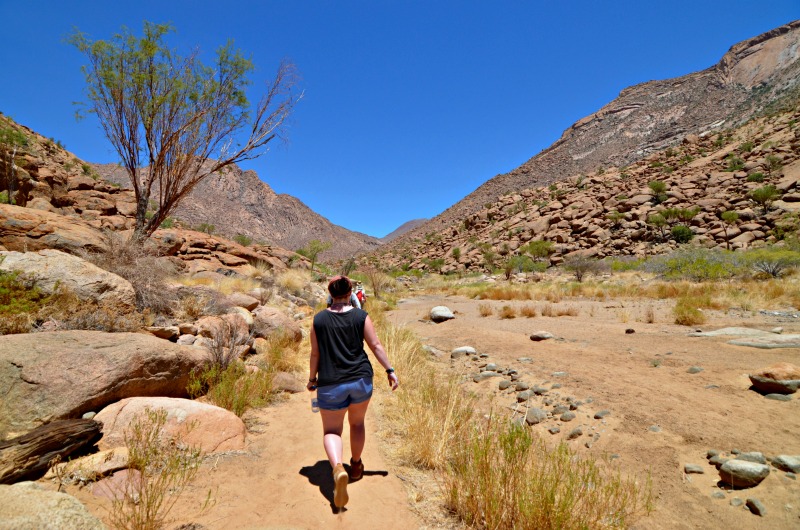
Meeting History
We walk up a small set of stone stairs and come face-to-face with Namibia’s ancient creative culture. A small cavernous wall in what’s called the Maack Shelter is covered in paintings of spiritual animals, hunting, gathering and psychedelic visions from ancient healers who ate hallucinogenic desert plants to reach another realm of “reality.” Think oryx with human legs and people with antelope features. Many of the depictions have special meanings for communicating, such as giraffes signifying water is nearby or an unfinished ostrich telling others the hunt was unsuccessful. The paintings are precisely drawn using natural materials like animal blood, charcoal and ground sandstone.
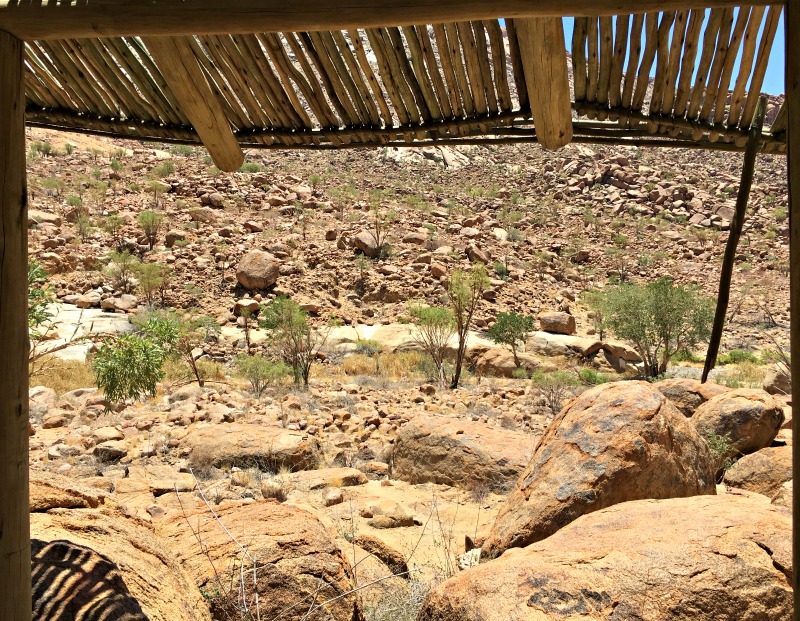
The White Lady sits in the center of the animals and is, according to Justice, actually a man. They know this because there is evidence of phallus decorations and a bow and arrows, which women thousands of years ago would not have had. “She” was originally discovered in 1917 by a German topographer, and is thought to be about 2,000 years old.
The site of these paintings was once used for rituals. Certain animals were thought to have supernatural powers, which is why they were used in these ceremonies. People also often wore these animals’ skins or drank the sweat of the local shaman to get closer to these powers.
The White Lady himself is actually believed to have been a real shaman, given away by the antelope-tail fly whisks, knee and arm straps, and the dancing rattles used during ritual performances. Furthermore, body markings or ritual sweat are shown on the White Lady as streaks and drops. Finally, they know the White Lady was an actual person because each medicine figure in the Maack Shelter is drawn with unique features.
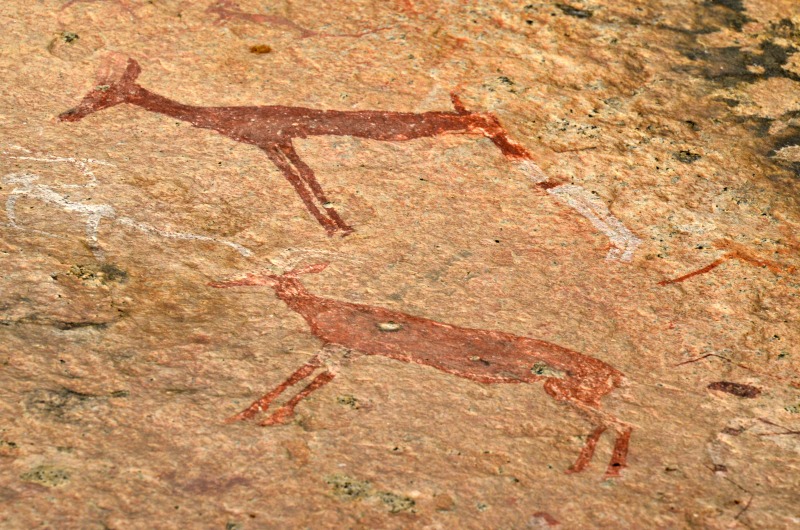
Gaining Perspective
It’s amazing these primitive paintings still exist so vividly, showing once again that new is not always better. I can’t imagine someone coming out here with a paintbrush and some Benjamin Moore acrylic and having their artwork last for thousands of years through desert storms and Mother Nature’s elements.
We sit there for literally 20 minutes just staring at the wall of rock art. I can’t remember the last time I went to any museum and was able to watching something for that long. It was so simple yet so moving – a broad education on just a small piece of rock. So worth the heat, though I would recommend anyone else to start this hike early in the morning.
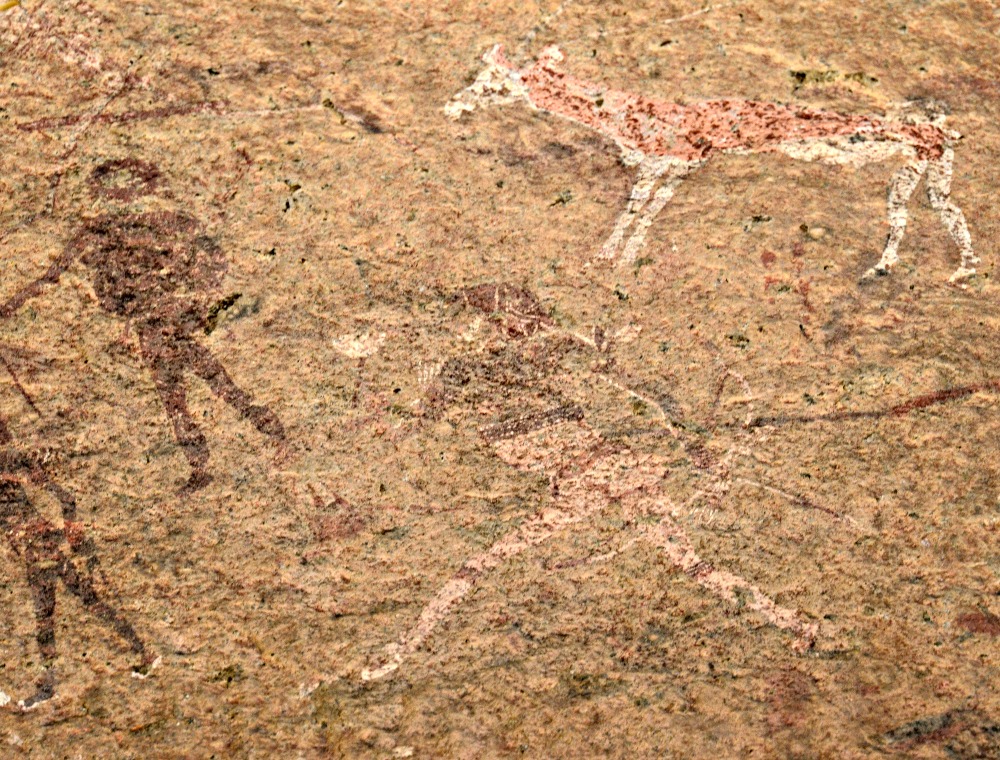
A Beautiful Ending
Afterward my Vulkan Ruin Tours & Transfers guide, George, takes the group to the night’s accommodation, about 10 minutes away by car: The Brandberg White Lady Lodge. It’s simple, with small wooden chalets offering beautiful views of the desert and myriad butterflies flocking about the porch. There’s no air conditioning, fans or soap, but there are plenty of mountain trails to climb onsite (great for sunrise!) as well as two pools and bar fully stocked with beer.
I throw on my bikini, order a crisp Windhoek Lager and settle into the pool, naturally heated by the sun for bath water temperatures. Sometimes, the most moving and memorable experiences don’t need to cost a fortune. They can be simple, taking you from past to present, from ancient cultural hikes to clinking drinks with other tourists at a hotel.

A bit of booze on the patio with a pen and paper allows me to create my own art through text, as the scenery inspires me to write. I’m slightly out of my comfort zone (I’ll admit I miss the air conditioning), but still can’t wait to put pen to paper and create my own bits of myself, though instead of ancient rock paintings mine will be on the Internet for future robots to see. These robots, though, might also want to visit the White Lady transported by their jetpacks, as the site is in the running to be classified as a UNESCO World Heritage Site.
Have you visited Brandberg Mountain’s famous painted White Lady? What was your experience like? Please share in the comments below!
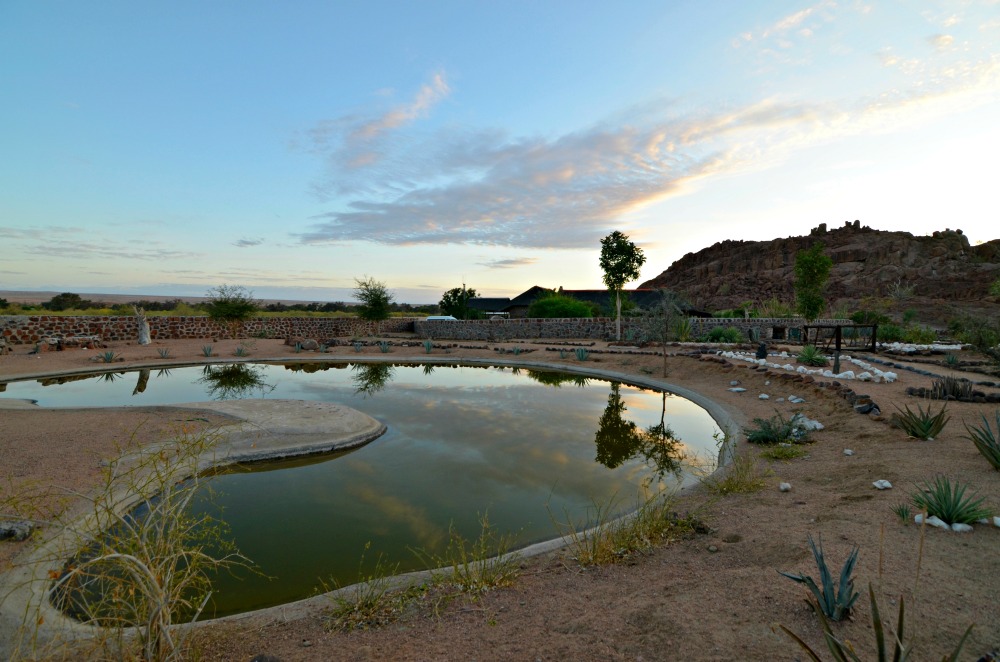
Logistics:
Stay: Brandberg White Lady Lodge. You’ll get your own small and very basic chalet (no soap, fan or air conditioning). They keep the room dark though to keep it cool, and the evenings cool down significantly. There wasn’t Wi-Fi, though my local SIM card allowed for cell service. There are also two pools, camping, a bar and restaurant.
Local Guide: I used Vulkan Ruin Tours & Transfers and was extremely impressed with their dedication to responsible tourism and education. My guide, George, and driver, Martin, were both fun and knowledgable, helping to facilitate all activities in a way that helped our group get the most out of them. I would recommend requesting them when making your booking.
When To Go: Namibia is a year-round destination; however, for wildlife viewing June through October is best as it’s dry season.
Currency: The Namibian Dollar. As of March 3, 2016, the exchange rate is about $1 USD = $15.67 Namibian Dollars.
Language: English is the national language, though most also speak Afrikkans and German (Namibia experienced a period of German rule from 1884 under German South-West Africa).
Staying Connected: If you travel a lot a KnowRoaming Global SIM Sticker affixes to your SIM to give you local rates and eliminate roaming charges in 200+ countries. Otherwise, you can purchase a local SIM card from MTC. My starter pack cost about $5 and lasted me for eight days of pretty consistent use. Note: You’ll need an unlocked phone to be able to do this. You can call you cell phone provider to have this done if it’s not already.
Dress: Dress is casual and comfortable. While I’d read many guides saying you must cover your shoulders and knees, I didn’t find this to be the case in reality. While I’d skip dressing provocatively, shorts, tanks, tees and sundresses are totally fine.
Outlets: The four of us on my tour group ALL mistakenly brought the wrong converters. I even brought a 150+ country converter and it still didn’t work. Make sure to get this one.
Must-Pack Essentials: Along with your typical gear, make sure to have:
- Sunscreen
- Light long sleeve shirt to block sun (I love the insect-repelling NosiLife line from Craghoppers)
- Sunglasses
- A hat (I like this insect repelling one from Craghoppers)
- Scarf-shawl (great for chilly nights and plane/car blankets)
- Aloe
- A Telephoto lens
- Namibian/South African Converter
- Personal alarm siren (I didn’t feel Namibia was dangerous, but I always carry this)
- Pickpocket-Proof Garments (again, something I always pack)
- BUFF (for sun and dust protection)
Jessica Festa
Latest posts by Jessica Festa (see all)
- A Culturally-Immersive Adventure In Mongolia’s Altai Mountains - Jul 8, 2023
- This Recipe Sharing Platform Supports Women In The Culinary Industry (Labneh Recipe Included!) - Nov 5, 2020
- Hiking The Mohare Danda Community Eco-Trek In Nepal - Jun 3, 2020
- 6 Important Questions For Choosing A Responsible Yoga Retreat - May 18, 2020
- How To Create & Grow A Profitable Blogging Business (Ethically) - Jan 18, 2020

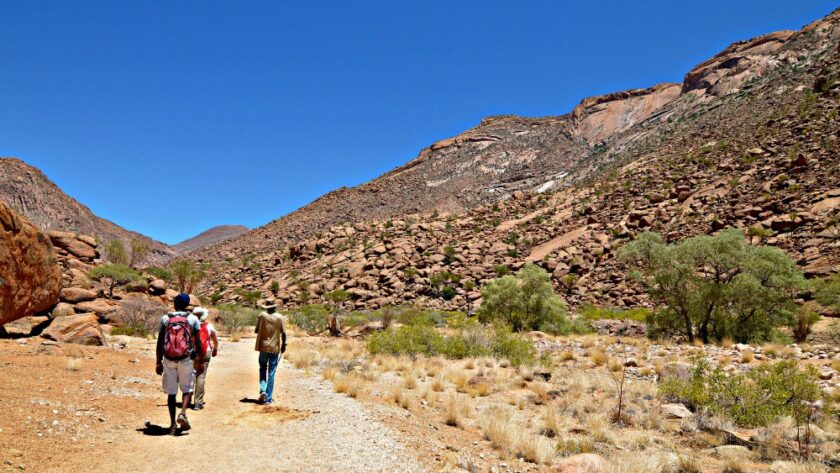

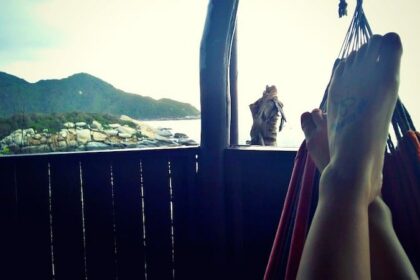

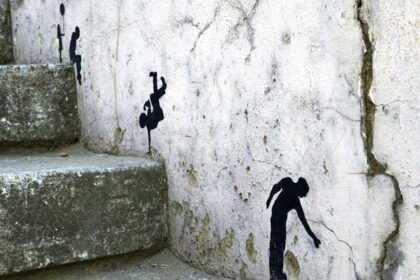
Hi Jessica! Yes, I just returned from Namibia and the Brandberg. We 5 friends rented a Toyota Hillux with 2 Roof tents and took off for a 3-week Adventure in Namibia. I so enjoyed reading your blog and found that you experienced what we did. We had the pleasure of hiking to the paintings with Ined, who sang “A Mighty Fortress is our God” in her Damara click-language. Our contacts with Namibians, their lives, and their Trials, all made us connect with this amazing Country! Thanks for your descriptions!